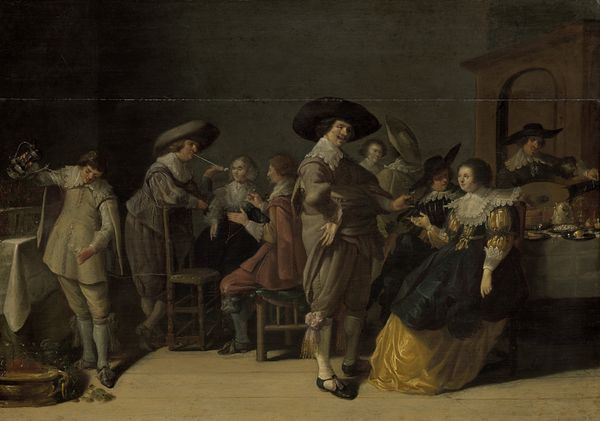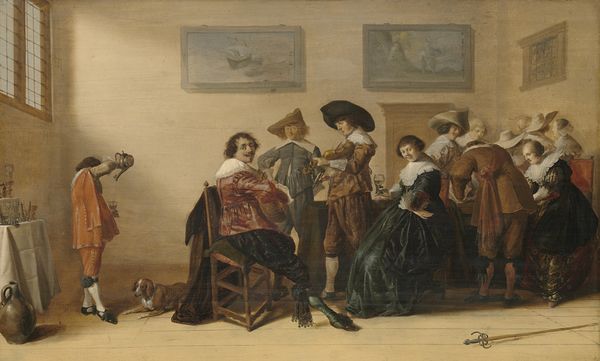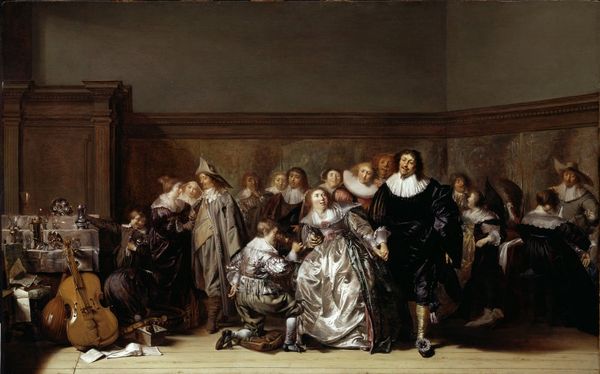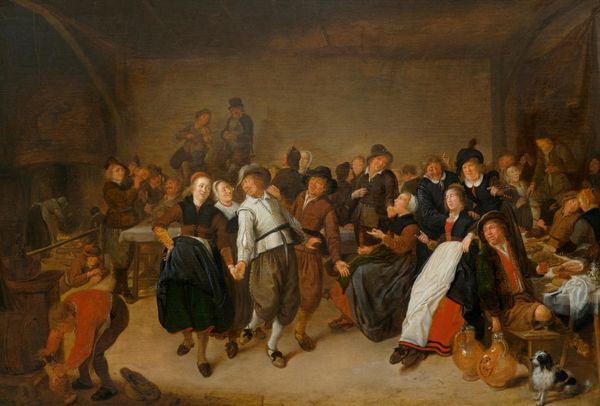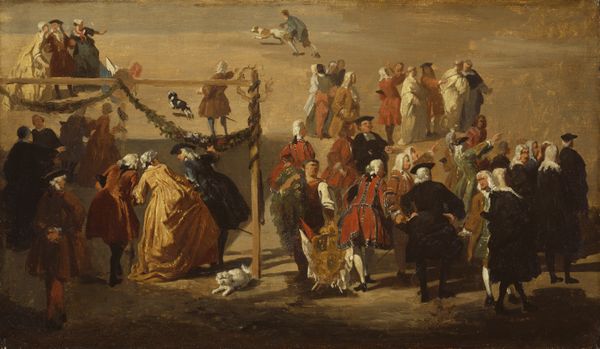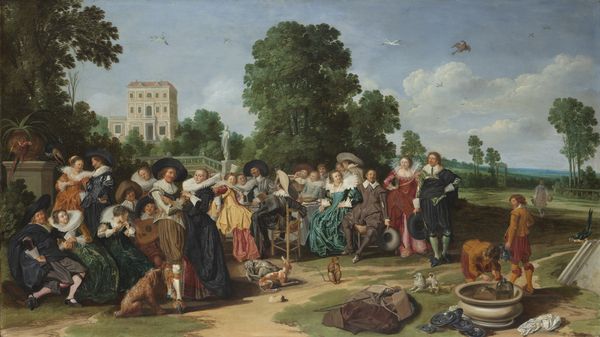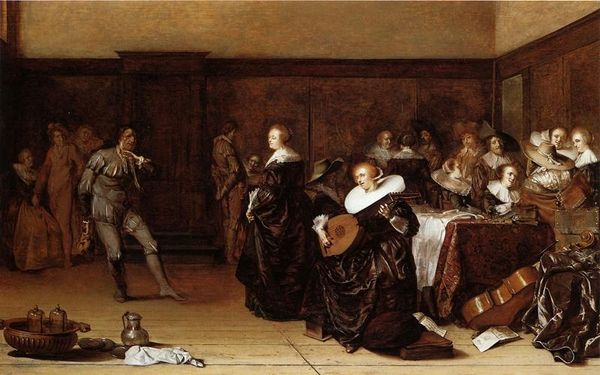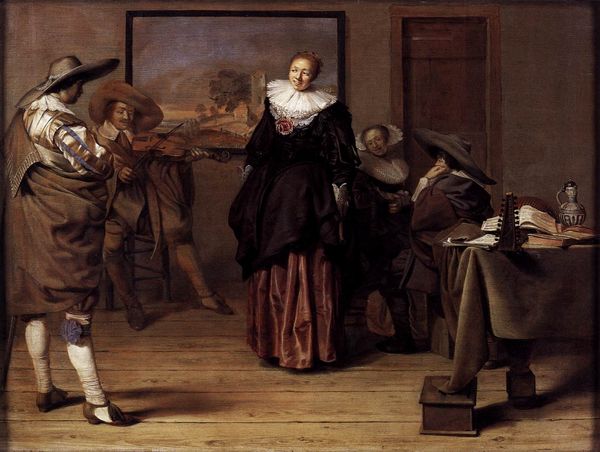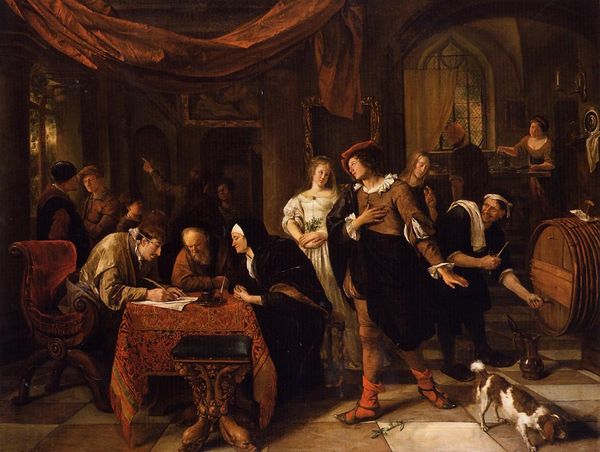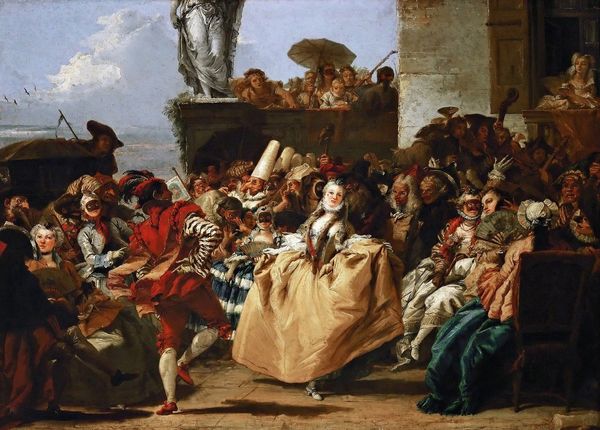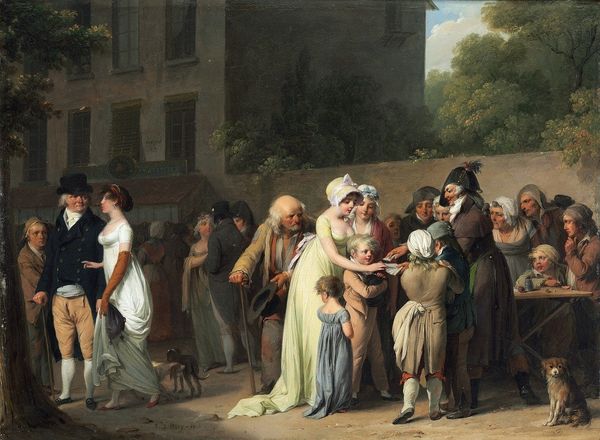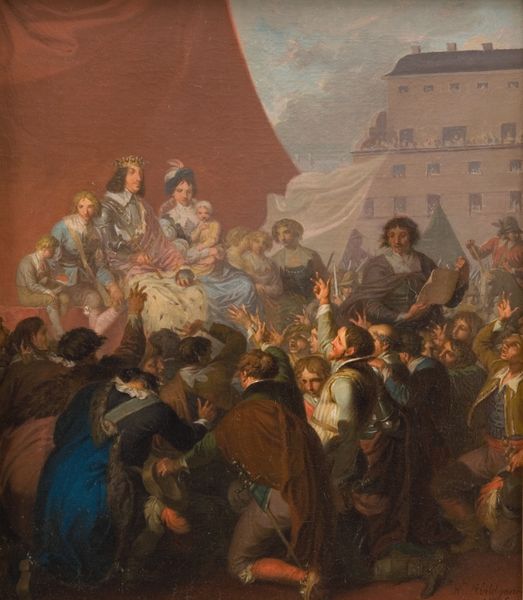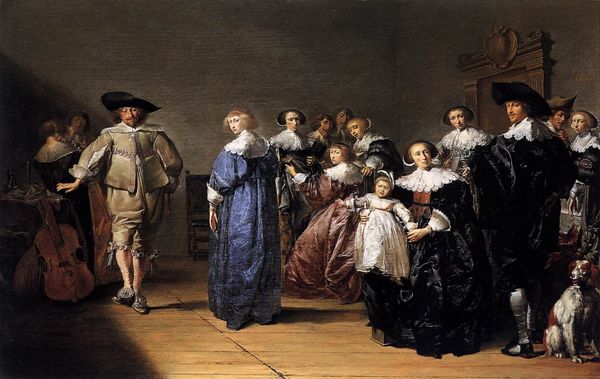
painting, oil-paint
#
portrait
#
baroque
#
painting
#
oil-paint
#
costume
#
costume
#
painting painterly
#
genre-painting
Copyright: Public domain
Curator: Pieter Codde’s “Merry Company with Masked Dancers,” painted in 1639, offers a glimpse into the social rituals of the Dutch Golden Age. Editor: The oil paint practically vibrates with the energy of the scene. Look at the fabrics—the sheen and texture! The painting conveys such opulence but, curiously, also feels constrained, almost airless. Curator: Indeed. Codde often captured these intimate gatherings. The clothing is critical here—the elaborate costumes signify not just wealth, but the performance of identity and social roles within this space. The masked figures, in particular, blur the lines between the private and the public self, prompting us to consider how people presented themselves, especially considering the rigid social structures of the era. Editor: Exactly. I’m struck by the lute player; observe how the musician is not just performing but producing—her labor and the construction of this social scene is key to how the scene unfolds. Codde draws our attention to that material exchange. Think of all the raw materials required: the dye for clothing, the wood for the instruments, even the food and drink out of view that fuelled the gathering. Curator: The idea of production broadens the conversation here. This isn't simply about idle enjoyment, but also about the very active construction of cultural and class boundaries. Who is included, and who is excluded? The almost claustrophobic arrangement reinforces this—there is very little negative space. Consider also the absence of laborers and servants—made invisible in the canvas even while their contributions underpin the scene. Editor: That's a sharp point. We can see how Codde focuses on the commodities, like the garments and instruments, rather than dwelling on the individual craftsmanship involved. It speaks volumes about value in this society. Curator: By examining who is granted visibility and how societal rituals were carried out and framed through painting, we can consider how power operated in 17th-century Netherlands. Editor: The attention to materiality, combined with the undercurrent of constraint, prompts an intriguing conversation about how economic conditions affect self-expression through gatherings like these.
Comments
No comments
Be the first to comment and join the conversation on the ultimate creative platform.
